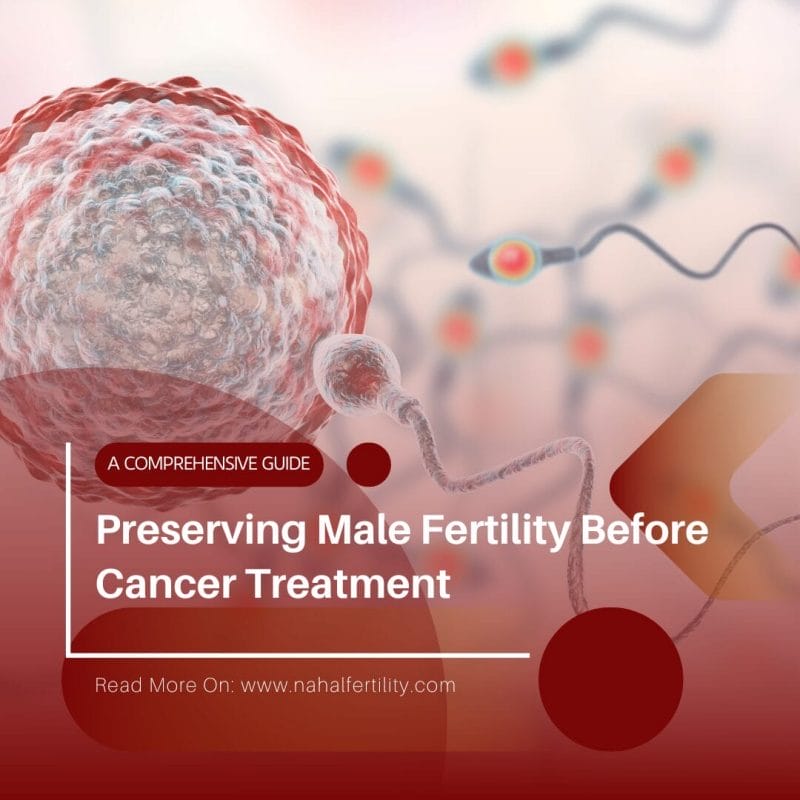When you think about fertility, what comes to your mind? Many people immediately picture egg cells, sperm, and conception. However, one of the main players in reproduction is the hormones that work continuously. These tiny molecules have a massive influence on your fertility, whether you’re looking to conceive or just curious about how the process works.
In this article, we will delve deep into the world of reproductive hormones, explaining what they are, how they work, and why they are so crucial to both male and female fertility. By the end, you’ll have a clearer understanding of your body’s hormonal landscape and how it impacts your reproductive health.
Introduction to Reproductive Hormones
Both men and women rely on a complex hormonal system to support reproductive health. Any imbalance can lead to challenges in conception, pregnancy maintenance, or long-term reproductive function.

What Are Reproductive Hormones?
Reproductive hormones are like chemical messengers produced by various glands in the body. They play a crucial role in regulating fertility by controlling everything in men and women, from the menstrual cycle to ovulation, sperm production, and even pregnancy maintenance.
Why Are Reproductive Hormones Important?
These hormones don’t just affect reproduction, they influence your overall health. From puberty to menopause, they control sexual development, reproductive cycles, and even your mood and energy levels. Understanding how these hormones work can help you better understand fertility issues and how to address them.
The Endocrine System and Fertility
The endocrine system is a network of glands that produce and secrete hormones directly into the bloodstream. It is composed of glands such as the hypothalamus, pituitary, thyroid, and ovaries/testes, and is responsible for producing reproductive hormones. It is this delicate system that regulates the complex processes of human reproduction.
The hypothalamic-pituitary-gonadal (HPG) axis is crucial to the endocrine system’s role in fertility. This axis serves as the key communication pathway between the brain and the reproductive organs. It ensures that hormonal signals from the hypothalamus and pituitary gland properly regulate the function of the ovaries and testes, supporting reproductive health and fertility.
The Hypothalamic-Pituitary-Gonadal (HPG) Axis
What Is the HPG Axis? The Brain & Reproductive Connection
Central to reproductive hormone regulation is the HPG axis, a complex set of interactions among the hypothalamus, pituitary gland, and gonads (ovaries in women and testes in men). This axis controls the development and regulation of the reproductive system. It involves three main components:
- Hypothalamus: The brain region that releases Gonadotropin-Releasing Hormone (GnRH).
- Pituitary Gland: Responds to GnRH by releasing Follicle-Stimulating Hormone (FSH) and Luteinizing Hormone (LH).
- Gonads (Ovaries or Testes): The ovaries or testes respond to FSH and LH by producing eggs or sperm and releasing other hormones like estrogen or testosterone.
This cascade of hormonal signals ensures the proper functioning of the reproductive system.
Key Hormones in Female Fertility
Female fertility is driven by a delicate balance of hormones that regulate the menstrual cycle, ovulation, and pregnancy.
- Gonadotropin-Releasing Hormone (GnRH):
GnRH is released by the hypothalamus and stimulates the pituitary gland to release FSH and LH. Without GnRH, the body cannot initiate the cascade of hormones necessary for fertility. - Follicle-Stimulating Hormone (FSH):
FSH is essential for the development of ovarian follicles, the tiny sacs where eggs mature. It also stimulates the ovaries to produce estrogen, a hormone that plays a key role in the menstrual cycle and ovulation. - Luteinizing Hormone (LH):
LH triggers ovulation by stimulating the release of a mature egg from the follicle. It also supports the formation of the corpus luteum, a structure that produces progesterone after ovulation. - Estrogen:
Estrogen is crucial for preparing the uterine lining for implantation. It also helps regulate other aspects of the menstrual cycle and contributes to the development of female secondary sexual characteristics, like breast development. - Progesterone:
After ovulation, progesterone stabilizes the uterine lining to support early pregnancy. If pregnancy doesn’t occur, progesterone levels drop, leading to menstruation. - Human Chorionic Gonadotropin (hCG):
hCG is produced after fertilization and plays a vital role in maintaining the corpus luteum during early pregnancy. It is the hormone detected by pregnancy tests.
- Anti-Müllerian hormone (AMH):
AMH is a hormone produced by ovarian follicles (eggs) that helps assess a woman’s ovarian reserve. Measuring AMH levels can provide insight into fertility potential, though it does not predict natural conception or egg quality.
What are the reproductive glands that produce female hormones?
The primary reproductive glands that produce female hormones are the ovaries. Located on each side of the uterus, the ovaries are responsible for producing eggs and secreting hormones such as estrogen and progesterone, which regulate the menstrual cycle and support pregnancy.

Key Hormones in Male Fertility
Male fertility and reproductive health also depends on a finely tuned balance of hormones, including:
- Gonadotropin-Releasing Hormone (GnRH):
GnRH triggers the release of FSH and LH, which are essential for sperm production and testosterone production, respectively. - Follicle-Stimulating Hormone (FSH):
In men, FSH stimulates the testes to produce sperm, a process known as spermatogenesis. - Luteinizing Hormone (LH):
LH prompts the Leydig cells in the testes to produce testosterone, which is essential for sperm production, libido, and the development of male secondary sexual characteristics. - Testosterone:
Testosterone plays a central role in male fertility by influencing sperm production, libido, and the development of male features like facial hair and deeper voice.
What are the reproductive glands that produce male hormones?
In males, the primary reproductive glands responsible for hormone production are the testes, which produce testosterone. Additionally, the adrenal glands secrete small amounts of testosterone.
Feedback Mechanisms in Hormonal Regulation
The body maintains hormonal balance through feedback loops. Hormonal levels are constantly being monitored and regulated by bio-feedback mechanisms. When hormone levels get too high or too low, the body adjusts production to maintain balance. This feedback loop ensures that the body remains in a state of hormonal equilibrium, supporting reproductive health.
For instance, high levels of sex hormones can signal the hypothalamus and pituitary gland to reduce the secretion of GnRH, FSH, and LH, preventing overproduction and ensuring stability within the reproductive system.
Reproductive Hormonal Changes Across the Lifespan
Reproductive hormone levels fluctuate throughout life, influencing fertility at various stages.
Puberty: The Beginning of Fertility
Puberty marks the onset of reproductive hormone activity, leading to the development of secondary sexual characteristics and the ability to conceive.
Menstrual Cycle: A Monthly Hormonal Dance
The menstrual cycle involves fluctuating hormone levels that regulate ovulation and prepare the body for pregnancy. Each phase of the cycle (follicular, ovulatory, and luteal) is governed by specific hormonal patterns.
Pregnancy: Hormonal Adaptations
During pregnancy, a woman’s hormone levels increase dramatically. These hormonal changes help maintain the pregnancy and support the development of the fetus.
Menopause: The End of Female Fertility
As women approach menopause, hormone production declines, leading to the cessation of menstruation and the end of fertility.
Andropause: Male Hormonal Changes
While women experience a clear hormonal transition at menopause, men also experience a gradual decline in testosterone, known as andropause. This can affect fertility, energy levels, and libido.

Disorders Related to Reproductive Hormones
Imbalances in reproductive hormones can lead to various health issues affecting fertility, such as the following disorders:
Polycystic Ovary Syndrome (PCOS)
PCOS is a common hormonal disorder in women, characterized by an imbalance of reproductive hormones. This can lead to irregular periods, ovarian cysts, and difficulty conceiving.
Hypogonadism
Hypogonadism in men refers to low testosterone levels, which can impact sperm production, libido, and overall reproductive health.
Thyroid Disorders
Thyroid imbalances can significantly affect fertility. Hyperthyroidism or hypothyroidism can disrupt the menstrual cycle and hinder ovulation.
Diagnostic Evaluation of Hormonal Fertility Issues
Hormonal fertility tests can assess the levels of key reproductive hormones like FSH, LH, estrogen, progesterone, AMH, and testosterone. These tests help identify any imbalances or disorders that may affect fertility. Interpreting these levels in the context of an individual’s menstrual cycle, age, and overall health is crucial for accurate diagnosis.
Therapeutic Interventions Targeting Hormonal Imbalances
Medications
Hormone therapies, such as Clomid or letrozole for women with ovulation issues or testosterone replacement therapy for men with low testosterone, can help correct imbalances.
Lifestyle Modifications
Diet, exercise, and stress management play an essential role in maintaining hormonal balance. Supplements to balance hormones for fertility, such as vitamin D, omega-3 fatty acids, and folate, can also make a significant impact.
Assisted Reproductive Technologies (ART)
In cases of infertility, Assisted Reproductive Technology options like IVF may require the use of hormones to stimulate the ovaries and control the timing of ovulation.
Conclusion: The Power of Hormones in Fertility
Hormones are at the heart of human reproduction, governing everything from puberty to menopause and fertility treatments. Whether you’re trying to conceive or simply curious about your reproductive health, understanding how these hormones work is the first step toward achieving your goals.
If you’re experiencing fertility issues or hormone imbalances, don’t hesitate to consult a specialist who can offer personalized advice and treatment options.
FAQs
The key hormones for fertility include GnRH, FSH, LH, estrogen, progesterone, and testosterone. These hormones regulate everything from ovulation to sperm production.
Hormonal imbalances, such as elevated or low levels of FSH, LH, or estrogen, can disrupt ovulation, menstrual cycles, and sperm production, making conception more difficult.
A fertility hormone test typically includes measures of FSH, LH, estradiol, progesterone, AMH, and testosterone. These levels can help assess ovulatory function and overall reproductive health.
After fertilization, the hormone human chorionic gonadotropin (hCG) becomes elevated. Produced by the developing placenta shortly after implantation, hCG supports the corpus luteum, ensuring continued production of progesterone and estrogen to maintain the uterine lining and early pregnancy.
Luteinizing Hormone (LH) is primarily responsible for triggering ovulation. A surge in LH levels mid-cycle prompts the release of a mature egg from the ovary, making it available for fertilization.
Excessive alcohol consumption in women can disrupt hormonal balance by increasing estrogen levels, which may lead to menstrual irregularities and an elevated risk of breast cancer.






